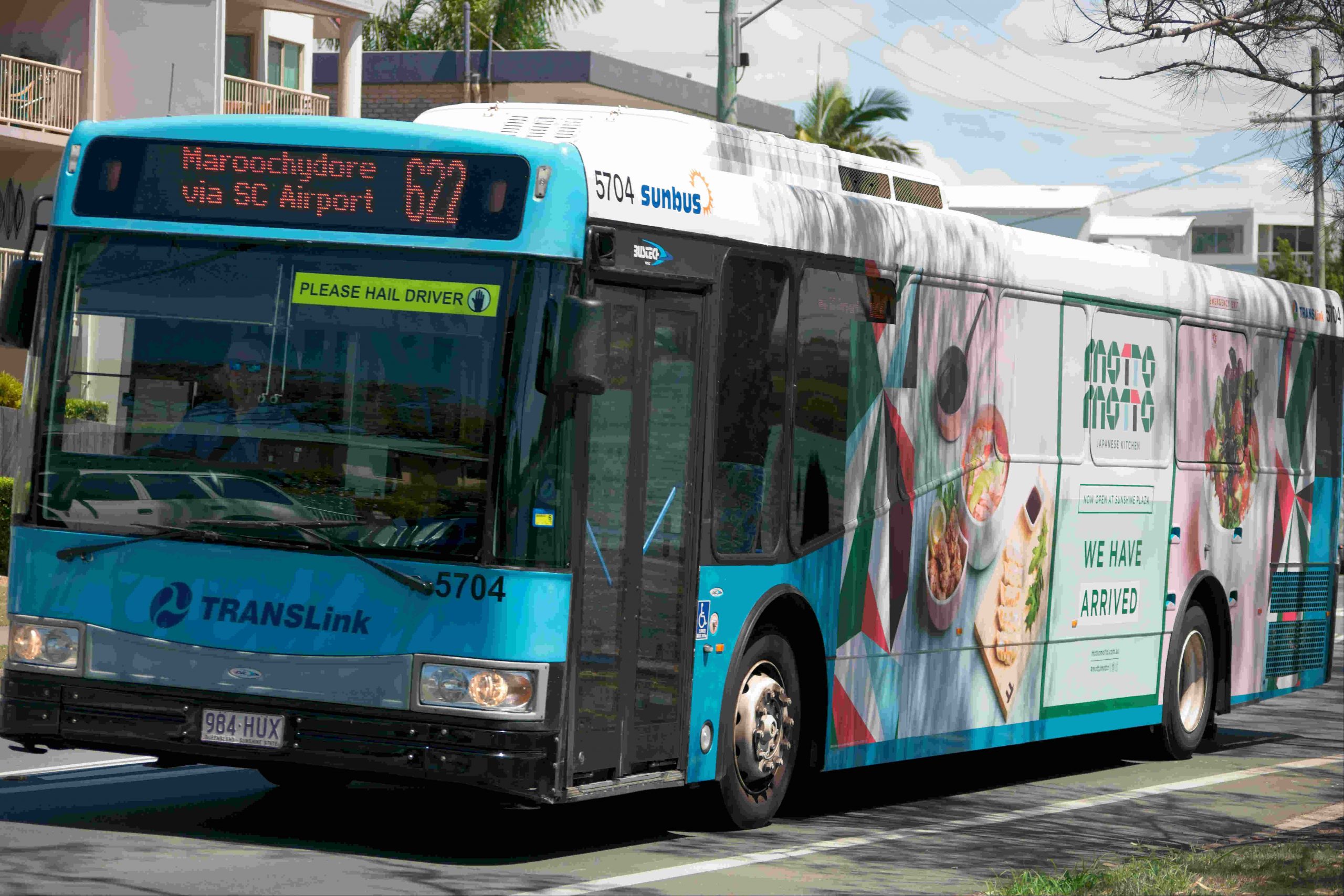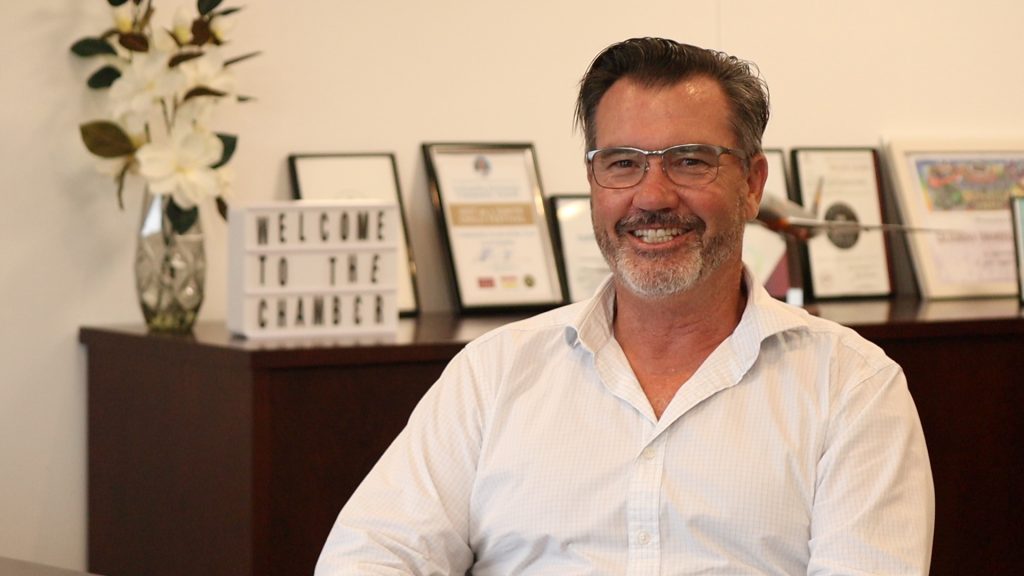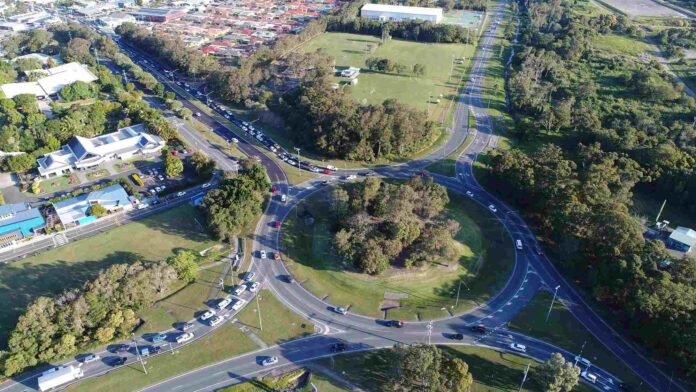A Sunshine Coast community leader is urging levels of government to invest in vital infrastructure to save the region from transport woes.
With the Sunshine Coast population expected to grow from 357,422 in 2021 to 518,004 in 2041, Caloundra Chamber of Commerce president Michael Shadforth said the region can’t wait a decade for infrastructure like heavy rail and needs available and affordable transport solutions now.
“Projects like heavy rail are essential but we need to fix the transport offering with affordable and available options now so we can unlock our economy and get people to where they need to be in a time and cost-efficient manner,” he said.
“We should be investing in better foot and bike paths, increasing the use of micro-mobility solutions like e-bikes and adapting new technologies like autonomous vehicles or electric inter urban air.
“What we need is a think tank of experts to lead our region into the future.”
In response, a spokesperson for the Department of Transport and Main Roads said it was working to accommodate the region’s predicted population growth.
“The Queensland Government is planning several major road, rail and public transport projects to help future-proof the rapidly-growing Sunshine Coast region,” they said.
“The multi-modal transport solution will help enable growth and enhance the lifestyle and liveability that locals and visitors deserve to enjoy.
“It will also help improve the efficiency of the existing transport network, while providing new, accessible and sustainable ways for everyone to travel.”

Transport Portfolio Councillor Rick Baberowski said Sunshine Coast Council was also planning measures to take the pressure off local roads.
“As more people choose to move to the Sunshine Coast, it’s clear there will be a higher demand for transport and potentially, greater stress on the network and increased car dependency,” he said.
“That’s why council has participated in and placed a great deal of focus on effective network planning and managing population growth, which are both essential to protecting our region’s character, lifestyle and environment into the future.
“Sunshine Coast Council’s Integrated Transport Strategy is a key document and guides the development of a smart, integrated, safe, efficient, sustainable, healthy and inclusive transport network that connects our communities.
“This strategy provides essential guidance on transport networks, integration and ambitious mode-share targets on the Sunshine Coast.
“Transport infrastructure is just one of the many elements of council’s 2022–23 $847 million budget, which delivers a strong, better and more sustainable Sunshine Coast.
“It includes places to enjoy, better community facilities, getting out and about, caring for our environment and our community, getting active and business support.”
SUBSCRIBE here now for our FREE news feed, direct to your inbox daily.
The CEO of Bridj, a company that specialises in demand-responsive transport and helped deliver better travel experiences for the 2022 Birmingham Commonwealth Games and is contracted to do the same for the next two, said the Coast lacks incentives for people to use alternatives to private transport.
John Langford-Ely said the Sunshine Coast’s shared and public transport offering wasn’t appealing and forced commuters into cars.
“Why don’t people use shared public transport? Because the offering doesn’t go where they want it to go at the time they want to go,” he said.
“So, until you make it more appealing, people aren’t going to change their behaviour.”
Mr Langford-Ely said using technology to improve the Sunshine Coast’s transport offering was critical in changing travel behaviours.
“Time and time again we have seen technology improve outcomes and the only way that you start to shift the dial is if you improve services, and technology is a tool that can make shared transport more appealing,” he said.
Mr Langford-Ely said data attained through his booking and fleet management platform also allowed travel solutions to adapt to suit passengers’ needs.
“You can’t expect to introduce something and it work overnight. You need to invest, learn from it and see what works, so you can make changes over time, and the best way to do that is data,” he said.

Mr Shadforth said that without available and affordable transport solutions the population wouldn’t have easy access to education, healthcare and cultural offerings.
He said poor transport would impact the region’s music industry and hinder its ability to attract young professionals and keep up with workforce demand.
“We know the average age on the Sunshine Coast is increasing, with the median expected to reach 44.9 years by 2041,” he said.
“While our region’s population is increasing, it is important to grow our cultural offering to help attract young professionals who can both support our community’s needs and grow our economy.”
Do you have an opinion to share? Submit a Letter to the Editor at Sunshine Coast News via: news@sunshinecoastnews.com.au. You must include your name and suburb.
*
In its response to Sunshine Coast News, the Department of Transport and Main Roads gave a detailed run-down of the road, rail and public transport infrastructure it is working on now or in the near future.
Rail and public transport
The draft Southern Sunshine Coast Public Transport Strategy has been developed to respond directly to the actions within the draft South East Queensland Regional Transport Plan and ShapingSEQ, providing a blueprint for public transport network developments across the coast.
The strategy details how a combination of public transport projects will better serve the local community and improve links to Brisbane and the broader network.
As part of this, the Queensland Government is investing to deliver better rail services in South-East Queensland with the North Coast Line (NCL) to the Sunshine Coast continuing to be a priority.
Early works are underway on the jointly funded $550.8 million Beerburrum to Nambour Rail upgrade (Stage 1). This upgrade will increase capacity, improve reliability and reduce travel times for passengers and freight.
Stage 1 will deliver three new bridges, remove level crossings, expand three park ‘n’ ride facilities and duplicate the section of rail track between Beerburrum and Beerwah.
We are also planning for a proposed passenger rail corridor between Beerwah and Maroochydore to increase public transport opportunities for the growing Sunshine Coast community.
The Australian and Queensland governments are progressing investment planning for this proposed passenger rail corridor known as the Direct Sunshine Coast Rail Line (DSC).
The DSC will review the preserved corridor and consider refinements to the alignment and station locations. Investment planning will also consider potential staging plans to meet passenger demand, land-use outcomes within the region and integration with the North Coast Line and broader transport network.
To enable greater travel alternatives for short, local, intra-regional trips, we are leading a detailed business case for an enhanced public transport connection between Maroochydore and the Sunshine Coast University Hospital at Birtinya, with a possible extension to Caloundra.
In developing the detailed business case, we are considering the work previously undertaken by Sunshine Coast Council as part of its Mass Transit Options Analysis, endorsed in 2021.
With the Sunshine Coast’s car ownership rates being the second highest in Australia, the project will help reduce the community’s reliance on private vehicles as a primary mode of transport.
There are currently 32 bus routes running across the Sunshine Coast from Caloundra to Noosa and into the hinterland to provide travel options.
We have recently invested heavily in the Sunshine Coast bus network with improvements to bus routes 602, 603, 606, 614, 616 and 617, delivered in late 2022. This followed the extension of routes 611 and 612 into the growing communities of Meridan Plains and Bli Bli in July last year.
Further improvements to the Sunshine Coast bus network are planned to be introduced this year and will be announced in due course.
Road infrastructure
Key to unlocking significant road and rail projects on the Sunshine Coast is the Mooloolah River Interchange (MRI) upgrade project, with design work already underway and a layout to be released to the community later this year.
The MRI project is the trigger for major infrastructure transformation in the region and will provide new connectivity between Maroochydore, Birtinya, Caloundra and the southern growth areas.
Planning for a new north-south motorway is also progressing to link the Sunshine Motorway, through the new Mooloolah River Interchange, onto the new Kawana Motorway, to Kawana Way Link Road and Bells Creek Arterial Road to the Bruce Highway.
The new Kawana Motorway (parallel to Kawana Way) will form a key part of this north-south motorway connection. It will provide a high-speed alternative route to the Bruce Highway for motorists travelling within the region and will help reduce traffic on Nicklin Way and Kawana Way.
The Kawana Motorway is one of two projects identified as a key priority in the $5 million Southern Sunshine Coast Roads Improvement Study funded by the Australian Government. The study prioritises upgrading Caloundra Road, Kawana Way Link Road and Bells Creek Arterial Road (CKB) intersection.
The CKB intersection business case is investigating options for staged improvements to improve travel times and safety. Planning these upgrades will address rapid urban growth in the new and emerging community south and west of Caloundra.
A new intersection at Third Avenue and Nicklin Way will reduce delays and provide an additional access to Caloundra. The $18.2 million intersection project is jointly funded by the Australian and Queensland governments and Sunshine Coast Council as part of the Caloundra Transport Upgrade.
Additionally, we are investigating future improvements at several locations along the Sunshine Motorway between Maroochy and Mooloolah rivers.
Planning on the Sunshine Motorway between Pacific Paradise to Coolum is investigating doubling capacity and upgrades to interchanges and active transport to improve safety, connectivity and efficiency.
We are also undertaking preliminary planning on several roads from Maroochydore to Peregian Springs, which make up the Maroochydore-Noosa Road route (including Bradman Avenue and David Low Way). The planning will guide investment over the next 20 years. In addition to accommodating private vehicles, this route is a key part of the Sunshine Coast’s active and public transport network.
Active transport are key considerations when planning and delivery infrastructure projects.
The Australian and Queensland governments are continuing to future-proof the Bruce Highway as part of the largest road infrastructure program Queensland has ever seen, the $13 billion Bruce Highway Upgrade Program.
The section between Brisbane and the Sunshine Coast remains a key priority as part of this program with several projects already under construction and planning for future priorities also progressing, including:
- Smart Motorways from Pine Rivers to Caloundra Road (construction)
- Maroochydore Road and Mons Road Interchange upgrade (construction)
- Steve Irwin Way (Exit 163) to Caloundra Road (planning)
- Caboolture Bribie Island Road to Steve Irwin Way (Exit 163) (construction)
- Uhlmann Road to Caboolture Bribie Island Road (planning)
- Anzac Avenue to Uhlmann Road (planning)
- Deception Bay Road Interchange (construction)
*
Sunshine Coast Council also gave a detailed response to Sunshine Coast News on the issue of transport, in addition to Cr Rick Baberowski’s comments above.
Cr Baberowski added: “Full details on how council is planning for and managing growth can be found on council’s webpage.
“Our council continues to work with the Department of Transport and Main Roads to contribute to the planning for an extension of heavy rail from Beerwah to the Maroochydore City Centre and establishing a high-quality local mass transit system.
“Council continues to advocate to the State Government for the delivery of all stages of the Mooloolah River Interchange.
“The Mooloolah River Interchange project is critical for unlocking the north-south and east-west traffic flow in the heart of the Sunshine Coast region and resolving one of the largest bottlenecks and congestion hotspots in the region.”
Active Transport
Meanwhile, council’s Active Transport Plan provides direction on delivering the region’s cycling and walking networks to ensure a robust, inclusive and sustainable transport system is accessible to all our community.
Council will continue to work through its community advisory committees to further develop programs to bring about a change in travel behaviour that promotes a healthy lifestyle for locals and maintains the Sunshine Coast’s remarkable, natural environment. Full details of the Sunshine Coast active transport plan can be found on council’s website.
Why building more roads isn’t the only answer
Trying to build our way out of congestion by constructing more roads would just continue our region’s unusually high dependence on car travel and threaten the liveability values we hold dear on the Coast.
Council wants to keep planned road upgrades to the necessary minimum needed to provide a functional and integrated transport network.
This ‘bigger picture’ approach gives locals alternative transport choices that include efficient bus and freight routes and emergency service access.
Council will continue to work in partnership with the state and federal governments as part of a tri-partite agreement to progress the detailed business case for a local mass transit system that seeks to provide a more sustainable travel option for our growing community.
Increased residential density done well and in the right locations is critical to ensuring that the Sunshine Coast has a sustainable pattern of settlement that can be supported by efficient transport and infrastructure networks that can meet increasing demand.
Council is working collaboratively to apply a “one network” approach to advocate for timely investment across all levels of government as well as industry to support the delivery of a viable and sustainable transport network that can meet the demands of growth.
We will also continue to advocate to the state and federal governments to commit investment in the delivery of a rail solution from Beerwah to Maroochydore and for that solution to be delivered in advance of the Brisbane 2032 Olympic and Paralympic Games.
Planning for more people choosing to live on the Sunshine Coast
The Sunshine Coast Planning Scheme 2014 sets the framework to manage growth and development on the Sunshine Coast.
It regulates the way land, buildings and structures are used and developed in our region.
Council will look to respond to the proposed review of the state’s SEQ Regional Plan, while continuing to prepare the new planning scheme in partnership with the community.
A new planning scheme will set the vision for the Sunshine Coast in 2041 and guide growth and development to help achieve that vision.
Full details of the Sunshine Coast Planning Scheme project can be found on council’s website.
Council, in conjunction with the state government, will continue to plan for – and facilitate – the development of the major urban communities at Palmview and Caloundra South.
These emerging communities, along with a future Beerwah East, will accommodate a significant proportion of the additional dwellings to 2041 and beyond.
Each of these expansion areas are master planned so that the communities benefit from high levels of access to centres and employment, planned public transport connections, active transport networks and other important infrastructure networks.
Planned future road upgrades
Current upgrades and planned future transport corridor upgrades over the coming 10 to 15 years are outlined in council’s Local Government Infrastructure Plan.
Community members can share their thoughts and ideas on the transport network when the Local Government Infrastructure Plan is updated and comment on proposed projects when concept designs are prepared.
Division 2 Councillor Terry Landsberg said: “The 1.6-kilometre Caloundra Transport Corridor Upgrade (CTCU), which is a joint Queensland Government and Sunshine Coast Council project, will improve connectivity and travel choice into Caloundra by creating a new connection into the CBD and reducing traffic congestion.
“The CTCU would also help attract business into the CBD as part of the Caloundra Centre Activation Plan.
“It’s important the Sunshine Coast has a sustainable community, a sustainable environment and a sustainable economy – and I hope by working with the community and the recently formed Stakeholder Interest Group we can have a shared vision of a sustainable and liveable future.
“For more information on planning and community engagement visit council’s Caloundra Transport Corridor Upgrade website.”
Division 4 Councillor Joe Natoli said: “Council is improving connectivity and travel choices in the heart of Mooloolaba.
“The Mooloolaba Transport Corridor Upgrade Project will see the road between Culbara Street and Venning Street, Mooloolaba, widened from two to four lanes.
“In addition to improving traffic flow, this important project will enhance the southern entrance into Mooloolaba and create a corridor that is integrated and inviting for pedestrians, cyclists, motorists and public transport users.
“This is one of many Mooloolaba infrastructure projects council is investing in to create a world-class destination for residents and visitors to enjoy, adding to the already completed active transport projects which include separate bikeway stages from Minyama to Mooloolaba, and the Mooloolaba Walk and Ride Bridge across Mayes Canal.
“For more information on the Mooloolaba Transport Corridor Upgrade, visit council’s Mooloolaba Transport Corridor Upgrade website.”





